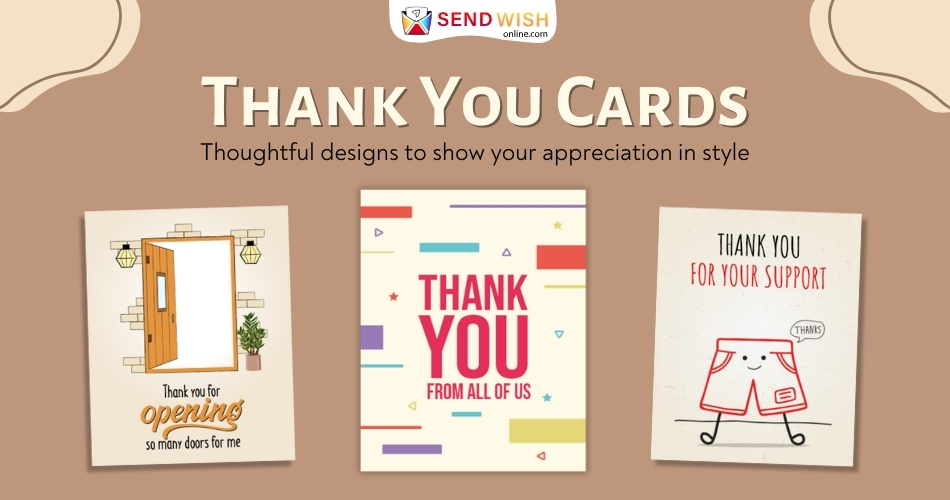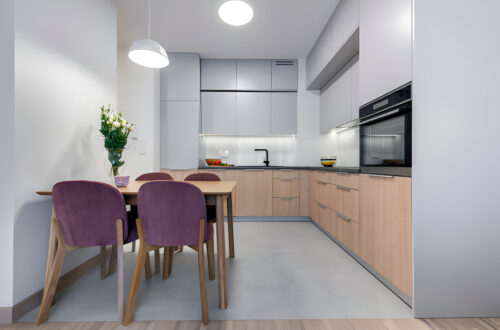In a world where digital communication has made exchanges swift and transitory, thank you cards hold an unparalleled position in saying thanks. Not like a quick email or message via text but a well-thought out thank you card tells a very tangible sense that indeed reflects effort, sincerity, and thoughtful consideration. Designing a meaningful thank you card is an art but more than just that; it’s all about designing something that relates to the recipient in his real life, so it lasts. Be it for a small favor, a monumental gesture, or anything in between; the timeless art of designing thank you cards captures the essence of appreciation.
The Emotional Power of Gratitude
Gratitude is one of the most potent feelings. Research shows that thankfulness expressed by a giver and receiver has psychological benefits. Such relationships foster good relationships, encourage emotional well-being, and foster a feeling of togetherness. In this context, the simple piece of paper becomes a thank you card, transforming into a symbol of appreciation and warmth.
One needs to realize in the process of designing a thank you card that he is simply channelling this emotion into a physical form. The essence is not just to say ‘thank you, but to create this gesture in a form that lets the recipient believe that you value and love him. In most cases, a correctly drafted thank you card can convert a flash of gratitude into a treasured keepsake.
Key Elements for a Meaningful Thank You Card
But before proceeding to the process of designing it, it should first be known what the constituents of a meaningful thank you card are. A card must express heartfelt, be creative and personalized. Let’s break down the constituents each:
- The Message
The message is the soul of the thank-you card. Design will be important but words carry the emotional weight. To be able to help you write your thank you message, remember the following:
Be concrete: Explain why you are thanking the person. Instead of the formula “Thanks for everything”, use, “Thanks for taking the time to help me prepare for the job interview. Thanks to your advice, everything went smoothly.”.
Personal tone: A personal touch of authenticity can be added to the message with it. Use the recipient’s name and even consider anecdotes or sharing a past experience with them in order to make it more intimate.
Be natural: Do not use clichés and speech filled with over-formal talk. The best thanks messages are those that come from the heart.
- Design Aesthetics
What makes it happen inside the recipient is the design of the thank you card. The visuals had created a tone long before the card is ever opened. Here’s how to get the design right:
Typography: Fonts convey emotion. For example, elegant flowing script fonts can give a very cozy, warm feel to a card, and bold sans-serif fonts can give a very futuristic, dynamic feel. The message and intent of a card should be congruent with the type of font selected.
Colors: These can be real wonders in designs each serving psychological effects. Pastel soft colours are soothing and endearing. Bright, rich colours are communicative of a sense of excitement and joy. The Colors should reflect and suit the occasion and recipient.
Drawing and Patterns: Simple hand drawing or digital illustrations can add considerable doses of charm and personality to your card. Few patterns such as florals, abstract shapes, etc., or minimalist designs can be suggestive of a timeless feel.
Layout: Keep the layout clean and balanced. A thank you card is not the place for clutter or overly busy designs. Let the message and visuals breathe, allowing the recipient to focus on your words.
- Materials and Textures
This is often the most understated tactile experience of a thank you card: aesthetics aside, this is a paper or card stock designed to evoke an essential sense of feel. Here are some options:
Textured Paper: Linen or cotton, or even textured card stock is used. Such paper provides an opulent look to your card. Such thickness excites the haptics as it gives a better sensory and realistic experience.
Matte vs. Glossy: Matte finishes offer us the feel of soft elegance that takes us back in time. Glossy finishes make colors pop out and give a very contemporary feel.
Embossing or Foil Stamping: One may add one more dimension of sophistication by adding embossed designs or metallic foil stamping, which will give the card depth and elegance.
Making Personalization: A Touch That Makes a Difference
A thank you card is just transcended from a pedestrian gesture with personalization. To add this personal touch to your card, here are some creative ways to do so:
- Handwritten Notes
In the age of digital, one only finds very rare pieces of paper with hand-written letters. Such a brief message or letter becomes that much more sincere and thoughtful when it is handwritten as opposed to merely printed. If your design suggests space for it, make sure to leave room for a handwritten note and let the recipient know that you’re putting value into the time taken to write that personal touch.
- Photos or Memories
Consider adding a photograph or an image that captures a shared memory. Whether it is a photo of the two of you together or an image representing a memorable occasion, the addition of a photo personalizes the thank you card and leaves a lasting memory.
- Custom Illustrations or Art
If you are creative, you can draw an illustration by hand and render the card personal. Or if not, there are tons of tools and designers out there who can help you come up with a full-fledged, entirely custom-made illustration that reflects the personality of the recipient or the occasion you want to thank him for.
- Custom-Made Envelopes
Often, this is the first thing that people see in a card, so do not forget this aspect. Adding a personal touch can include a handwritten name, custom stamps, or decorative envelope liners. Wax seals can be used to make an envelope formal and classy in an old-world fashion.
Designing Thank You Cards for Different Occasions
The thank you card may be varied and made to suit all occasions, either informal or formal. Here is how one may design based on one’s need:
- Wedding Thank You Cards
Thank you cards for weddings are a convention; they usually are sent to the guests and contributors after the big day. A more formal design is typical for these. Perhaps wedding colors, lovely typography, and maybe a photo from the wedding day will be good embellishments. Wedding thank you cards can also contain a personal message addressing each guest’s contribution, which will surely make them feel precious for attending your special day.
- Corporate Thank You Cards
The business world will appreciate thank you cards as a professional gesture of appreciation. They could be presented to the clients, partners, or employees. Such cards must strike a fine line between formality and warmth. What’s ideal for designs in thank you cards should be clean and minimalist in design with company branding such as logos or corporate colors. However the message inside it still displays appreciation.
- Thank You Cards for Gifts
A good design for a thank you card, when gifting something special, can be of fun vibrant designs for gifts, where colors and patterns talk of joy. It should put much emphasis on how much the gift meant to you and how you intend to enjoy or use it.
- Holiday Thank You Cards
The holidays are a great time to use thank you cards to express gratitude for hospitality, gift-giving, or end-of-year partnerships. Holiday thank you cards typically feature seasonal elements, such as snowflakes, festive colors, or holiday-themed illustrations. A heartfelt, warm message can bring it all together and spread cheer and thankfulness.
The Advent of Digital Thank You Cards
The popularity of digital thank you cards is significantly high because of the increasing popularity of emails, social media, and electronic card services that have been common in the last few decades. These cards may be faster and more convenient, but they do not lose their meaning or design. Digital thank you cards create special opportunities for exploration in
Some digital greeting cards have animations and music or other interactive features that may really hold the attention of the recipient in a manner paper and pen cannot.
When timing is everything, the digital card can always be used as a means to immediately express gratitude.
Those who want to do better for the environment may find it promising to use paperless digital cards in sending grateful thanks.
However, although they are much easier to use, digital cards can lack a certain warm, personal feel of a handwritten, paper card. Ultimately it is up to the recipient and the occasion.
Final Thoughts: Gratitude That Lasts
A thank you card, amidst a transient or fast way of communicating, is one such expression that is timeless and treasured. Designing a meaningful thank you card requires far more than aesthetic sense; it enables an experience that not only speaks of genuinity but of warmth, intimacy, and a connected personal relation. Attention to message, design, personalization, and occasion will help create thank you cards that are not just expressions of gratitude but also tokens for lasting significance.
The next time you sit down to create a design for a thank you card, know that you’re more than just crafting a stationery item-you’re creating a memory, a gesture, and a timeless expression of gratitude.





